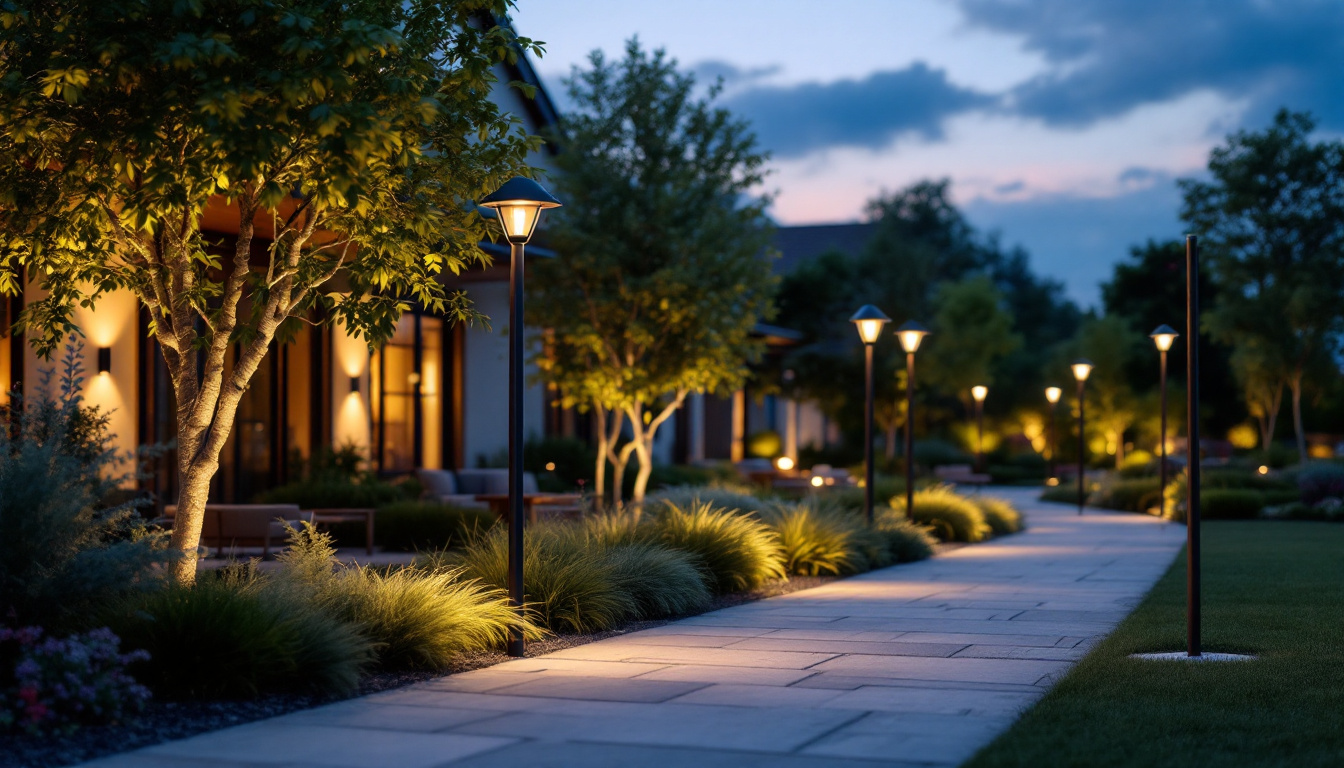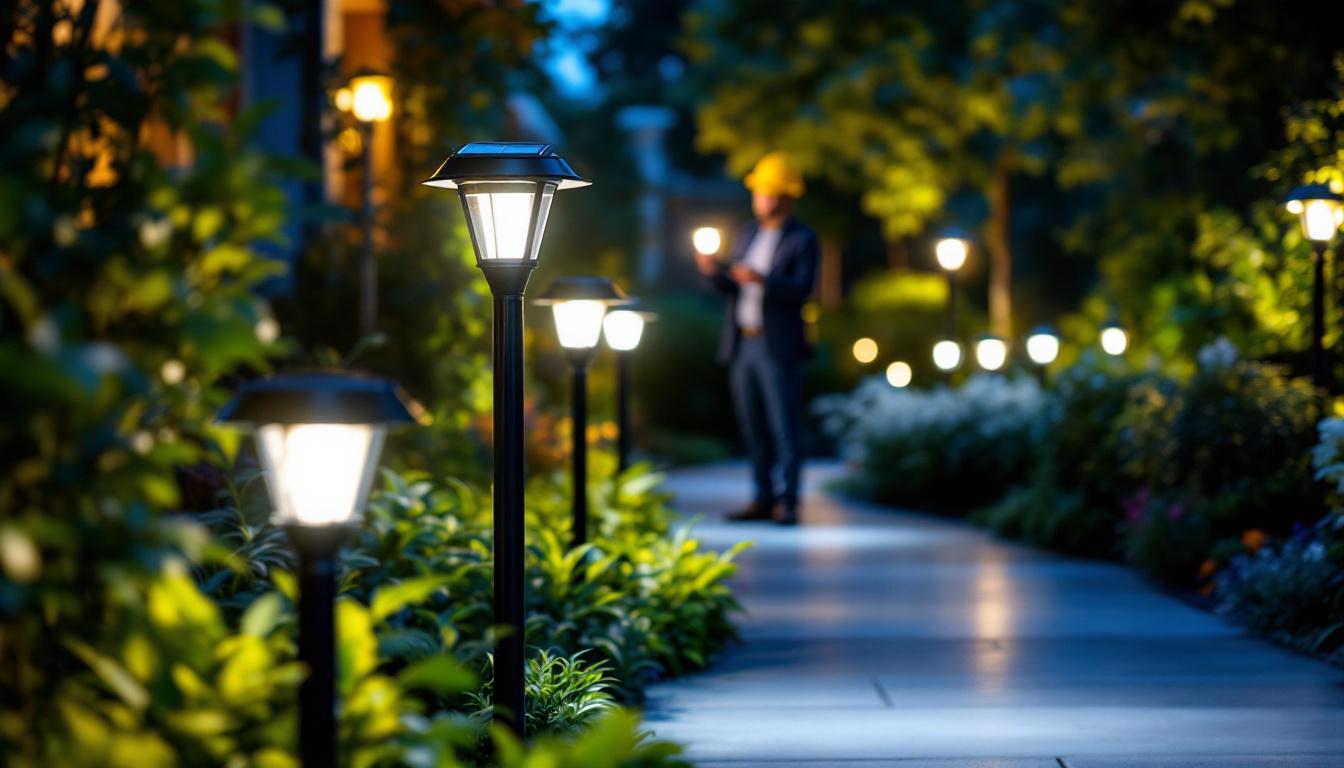
As outdoor lighting continues to evolve, the importance of selecting the right post lights for various projects cannot be overstated. Lighting contractors play a crucial role in enhancing the aesthetics and functionality of outdoor spaces, and understanding the nuances of outdoor post lights is essential. This article delves into the best outdoor post lights available, alongside tips and insights that can help lighting contractors excel in their projects.
Outdoor post lights serve multiple purposes, from illuminating pathways to enhancing the beauty of gardens and patios. They are available in various styles, materials, and technologies, allowing contractors to choose options that best fit their clients’ needs. Understanding the fundamental aspects of outdoor post lights is the first step toward making informed decisions.
There are several types of outdoor post lights, each designed for specific applications. Traditional lantern-style lights evoke a classic charm, while modern designs offer sleek, contemporary aesthetics. Solar-powered post lights are increasingly popular for their energy efficiency and ease of installation, while LED options provide longevity and reduced energy consumption.
Contractors should consider the intended use of the lighting. For instance, if the goal is to highlight a garden path, a low-profile light may be more suitable than a towering post light. Understanding these distinctions can help in selecting the right product for the job. Additionally, some post lights come equipped with smart technology, allowing for remote control and programmable settings. This feature not only enhances convenience but also allows for customizable lighting schedules that can adapt to seasonal changes or special occasions, providing both functionality and flair.
The material of outdoor post lights significantly influences their durability and maintenance requirements. Common materials include aluminum, stainless steel, and plastic. Aluminum lights are lightweight and resistant to rust, making them ideal for various climates. Stainless steel offers a modern look and exceptional durability, while plastic lights are often the most affordable option but may require more frequent replacement.
Contractors should also consider the finish of the materials. Powder-coated finishes can provide additional protection against the elements, extending the lifespan of the lights. Selecting the right material not only affects the aesthetic appeal but also the overall performance of the lighting solution. Moreover, the choice of material can impact the environmental footprint of the installation. For instance, opting for sustainably sourced materials or energy-efficient lighting solutions can appeal to eco-conscious clients, showcasing a commitment to sustainability while enhancing the outdoor space.
When selecting outdoor post lights, certain features can enhance functionality and appeal. Lighting contractors should prioritize these aspects to ensure client satisfaction and project success.
The brightness of outdoor post lights is measured in lumens, and understanding this measurement is crucial for contractors. A higher lumen count indicates brighter light output, which is essential for safety and visibility. However, the required brightness will vary depending on the area being illuminated. For pathways, softer lighting may be sufficient, while larger outdoor spaces may require more intense illumination.
Contractors should also consider the color temperature of the lights, as this can affect the ambiance of the outdoor space. Warmer tones create a cozy atmosphere, while cooler tones can provide a more modern and vibrant feel. In addition to these factors, it’s important to think about the placement of the lights. Strategically positioning lights can enhance their effectiveness, ensuring that they not only illuminate the desired areas but also create visually appealing shadows and highlights that enhance the overall landscape design.
Energy efficiency is a growing concern for both contractors and clients. Many outdoor post lights now come equipped with LED technology, which consumes significantly less energy compared to traditional incandescent bulbs. This not only reduces energy costs but also minimizes the environmental impact of outdoor lighting.
Additionally, solar-powered options are gaining traction. These lights harness sunlight during the day and automatically illuminate at night, providing an eco-friendly solution for outdoor lighting. Contractors should weigh the benefits of energy-efficient options against initial costs to provide clients with the best value. Furthermore, smart lighting systems are becoming increasingly popular, allowing for programmable settings and remote control via smartphones. This technology not only enhances convenience but also enables users to adjust brightness levels and schedules, further optimizing energy consumption and adapting to seasonal changes or special events. By exploring these innovative solutions, contractors can offer clients a comprehensive approach to outdoor lighting that aligns with modern sustainability goals.
Proper installation is critical to the performance of outdoor post lights. Lighting contractors must be familiar with best practices to ensure longevity and functionality.
When installing outdoor post lights, the location and spacing are vital for achieving optimal illumination. Contractors should assess the layout of the outdoor space and determine where lights will be most effective. For pathways, lights should be spaced evenly to provide consistent illumination, while accent lights may be strategically placed to highlight specific features. The use of lighting design software can assist in visualizing the effects of different placements and intensities, allowing for a more tailored approach to lighting design.
Additionally, contractors should consider the height of the post lights. Taller fixtures may cast light over a larger area but can also create shadows if not positioned correctly. Conversely, shorter lights can provide more focused illumination but may require more units to achieve the desired effect. It’s also important to take into account the surrounding landscape; for instance, if there are tall plants or structures nearby, their potential to obstruct light should be evaluated. This attention to detail can enhance both the aesthetic and functional aspects of the outdoor environment.
For electrically powered post lights, understanding the wiring and power supply is essential. Contractors should be familiar with local electrical codes and regulations to ensure safe installation. Proper grounding and circuit protection are crucial to prevent electrical hazards. Furthermore, it is advisable to use weather-resistant materials and components to withstand the elements, ensuring that the installation remains safe and functional over time.
In cases where solar lights are used, contractors should ensure that the solar panels receive adequate sunlight throughout the day. This may involve trimming nearby foliage or selecting locations that maximize exposure to sunlight. Additionally, the efficiency of solar lights can vary significantly based on the quality of the solar cells and batteries used; therefore, selecting high-quality products can lead to better performance and longer-lasting illumination. Understanding the seasonal variations in sunlight is also important, as this can affect the overall effectiveness of solar lighting solutions throughout the year.
Outdoor post lights are exposed to various weather conditions, making maintenance a key consideration for contractors. Educating clients on proper care can enhance the longevity of the lighting fixtures.
Dust, dirt, and debris can accumulate on outdoor post lights, diminishing their brightness and overall appearance. Regular cleaning is essential to maintain optimal performance. Contractors can advise clients to use a soft cloth and mild soap to clean the fixtures periodically, ensuring that the light output remains effective.
Additionally, contractors should recommend checking for any signs of wear or damage, such as cracked lenses or rusted components. Early detection of these issues can prevent costly repairs or replacements down the line.
Seasonal changes can impact outdoor lighting systems. In colder climates, contractors should advise clients to check for ice buildup or snow accumulation that may obstruct light output. In warmer months, it may be beneficial to inspect solar panels for any obstructions that could hinder performance.
Encouraging clients to conduct seasonal checks can help ensure that outdoor post lights function effectively year-round, providing consistent illumination for their outdoor spaces.
The landscape of outdoor lighting is continuously evolving, with new trends emerging to enhance both functionality and aesthetics. Lighting contractors should stay informed about these trends to offer clients the latest options.
Smart outdoor post lights are becoming increasingly popular, allowing homeowners to control their lighting via smartphone apps or voice-activated devices. These systems can be programmed to adjust brightness, color, and timing, providing a customizable lighting experience.
Contractors should explore smart lighting options to offer clients enhanced control over their outdoor spaces. This technology can improve energy efficiency and add convenience, making it an attractive choice for modern homeowners.
Incorporating decorative elements into outdoor post lighting is a growing trend. Fixtures that feature intricate designs or unique shapes can serve as focal points in outdoor spaces, adding character and charm. Contractors should consider the overall design theme of the project when selecting decorative lights.
Additionally, combining different styles of lighting—such as post lights with string lights or wall sconces—can create a layered lighting effect that enhances the ambiance of outdoor areas.
In the realm of outdoor lighting, post lights play a pivotal role in enhancing safety, aesthetics, and functionality. Lighting contractors equipped with knowledge about the best outdoor post lights, installation practices, and maintenance tips can significantly impact their projects’ success. By staying informed about trends and advancements in lighting technology, contractors can offer clients innovative solutions that elevate their outdoor spaces.
Ultimately, the right outdoor post lights can transform an ordinary outdoor area into a beautifully illuminated haven, making it a worthwhile investment for homeowners. With careful consideration and attention to detail, lighting contractors can master the art of outdoor post lighting, ensuring their clients enjoy well-lit and inviting outdoor environments.
Ready to elevate your lighting projects with the best outdoor post lights on the market? Look no further than LumenWholesale, where we provide lighting contractors with spec-grade lighting products at unbeatable wholesale prices. Our extensive selection is designed to meet the highest industry standards, ensuring you deliver reliable and high-performance lighting to every client. Plus, with free shipping on bulk orders, you can enjoy premium lighting solutions at the best value — all without hidden fees or compromises. Don’t let middleman markups dim your project’s potential. Choose LumenWholesale for quality, affordability, and convenience. Wholesale Lighting at the Best Value is just a click away.

Discover why post solar LED lights are becoming indispensable for lighting contractors.

Discover the key differences between T8 and T12 fluorescent tubes and why these distinctions matter for lighting contractors.

Explore the rising significance of linear high bay lights in the lighting industry.

Discover innovative hacks for smart lighting contractors working with T12 fluorescent tubes.